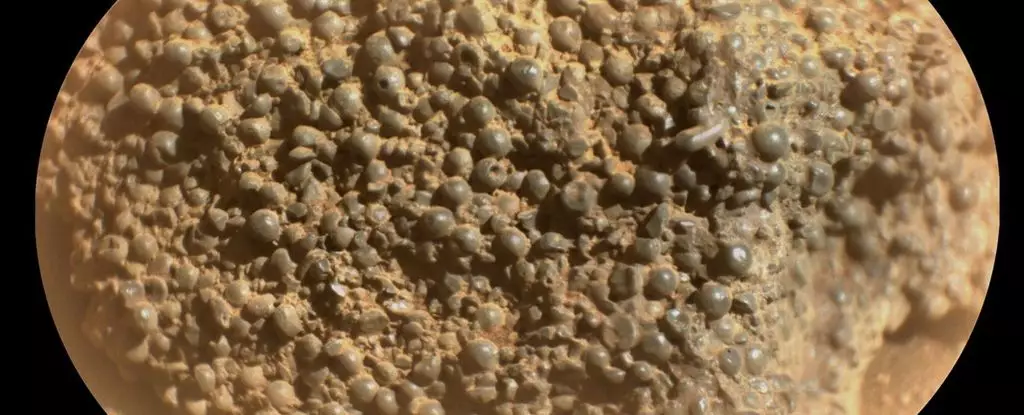Mars has always been a source of fascination for scientists and enthusiasts alike, offering insights into its complex geological history. Recently, the Perseverance rover has stumbled upon an astounding formation of rocks at Broom Point, located on the lower slopes of Witch Hazel Hill, within the ancient Jezero Crater. Named St. Pauls Bay, this peculiar rock resembles an otherworldly assembly of tiny dark gray spherules, each about a millimeter in diameter, clustered together in a strangely beautiful pattern reminiscent of aquatic frogspawn. Such discoveries continue to ignite curiosity about the planet’s geological processes and history.
The Mystery of St. Pauls Bay
The term “shocking” has been used by scientists to describe St. Pauls Bay, highlighting its stark difference from typical Martian geology. On Earth, similar formations known as botryoidal aggregates occur, usually formed by crystalline minerals under specific conditions. However, the formation mechanisms of these spherules on Mars are less understood, signaling that the processes at work may vary significantly from those on our planet. While Earth offers examples like grape agate or hematite, St. Pauls Bay exhibits characteristics that set it apart, leaving scientists at a crossroads trying to unravel its origins.
Theories of Formation
There are several theories regarding how such formations might occur on Mars. One possibility is that these spherules formed from rapid cooling of molten rock, a process that can arise during both meteorite impacts and volcanic activity. Historical analysis shows that Mars has experienced both scenarios, leading to the formation of other distinct spherical rocks, such as the hematite-rich “blueberries.” Interestingly, previous rovers, including Curiosity, have discovered similar tiny spheres in the Gale Crater, hinting at a broader pattern of aqueous activity shaping Martian geology.
However, the precise formation method of the St. Pauls Bay spherules remains elusive. Being classified as a float rock, the context of its formation is unknown, complicating efforts to pinpoint whether its creation resulted from water-driven processes or from fire until more data is acquired. The quest to determine its origin has only intensified the excitement surrounding this discovery, promising further revelations about the planet’s history.
Looking Ahead
Fortunately, observations from orbit suggest that nearby darker layers of rock could contain clues about the birthplace of this enigmatic formation. Scientists eagerly anticipate the Perseverance rover’s next move; a closer examination could unlock secrets tied to the very nature of Mars’s climatic past and geological makeup. As we stand on the brink of potential breakthroughs, the question looms: What else does the Martian surface harbor, patiently waiting for human curiosity and ingenuity to uncover?
In an age of exploration, discoveries like St. Pauls Bay are not merely geological anomalies but represent a profound journey into understanding our solar system’s complexities. They challenge us to rethink notions of habitability and geological activity, pushing the boundaries of what we know—and what we have yet to learn—about the Red Planet. Each finding ignites a sense of wonder, urging us to pursue further studies beyond the confines of Earth and embark on quests that could redefine our understanding of life and its origins in the universe.

